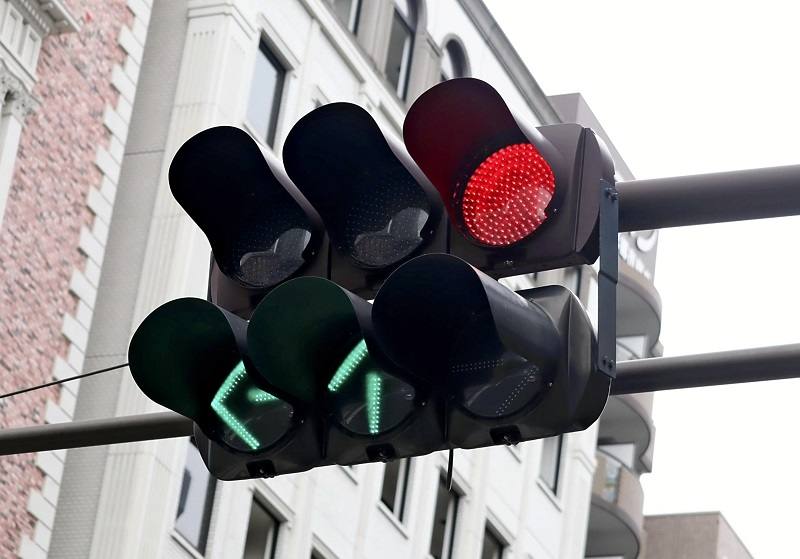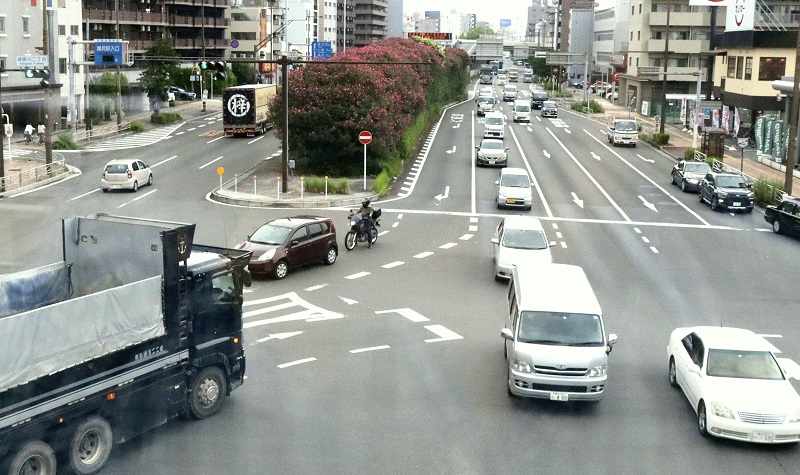Traffic light upgrades at critical intersections delayed by shortage of semiconductors

Traffic lights in Yokohama that can display arrows to turn right and left as well as to go straight
6:00 JST, October 11, 2022
The upgrading of traffic signals around the nation is being affected by the shortage of semiconductors due to the spread of the novel coronavirus and Russia’s invasion of Ukraine. There are cases where the inability to procure equipment to control traffic signals has led to delays in replacing the lights in accident-prone areas, causing alarm among police and industry groups.
At the busy Kanagawa 2-chome intersection on National Highway Route 15 in Kanagawa Ward, Yokohama, there were four accidents causing fatality or injury between December last year and August this year. In the wake of this, the Kanagawa prefectural police decided to replace six of 10 traffic lights at the intersection with a new type of signal that can display arrows to turn right and left as well as to go straight. The accidents involved vehicles turning right colliding with motorcycles or cars coming straight on in the opposite lane.

A busy intersection on National Highway Route 15 in Kanagawa Ward, Yokohama, where the introduction of a new type of traffic signal is being considered by the Kanagawa prefectural office
But the new signal type is equipped with a high-performance controller that requires semiconductors.
As there are no prospects for replacement because of the semiconductor shortage, the police decided to move a high-performance control unit already in use at another intersection to the Kanagawa 2-chome intersection as a stopgap. The old-style controller will be used at the former intersection for the time being.
“We must prevent another accident from happening while we wait for semiconductors. It is only a temporary measure,” a police official said.
In Kanagawa Prefecture, 250 control units were scheduled to be replaced last fiscal year but 50 of the replacements did not proceed as planned. In some cases, the replacement was completed only this fiscal year, five months behind schedule.
It is also unclear whether the planned replacement of 286 units by the end of this fiscal year will go smoothly.
In Gunma Prefecture, the installation of about 70 control units was completed nearly six months behind schedule last fiscal year.
In Tochigi Prefecture, the scheduled replacement of 28 traffic signals is said to have been postponed until this fiscal year.
In a February survey of 202 member companies by the Association of the Traffic Signal Construction Companies of Japan, 33 companies in Tokyo and 25 prefectures said they had experienced delays in the delivery of traffic signal equipment. The questions were about the impact of the shortage of semiconductors, and 70 companies responded.
“We don’t know how long the shortage will last, but we want to work with police to make sure that traffic safety is not affected,” said Naoki Akiyama, director of the association.
An official of the National Police Agency said: “In some cases, road signs and markings have been installed because traffic lights are not available. We will consider giving advice to each police headquarters so that they can set up traffic lights in a planned manner.”




